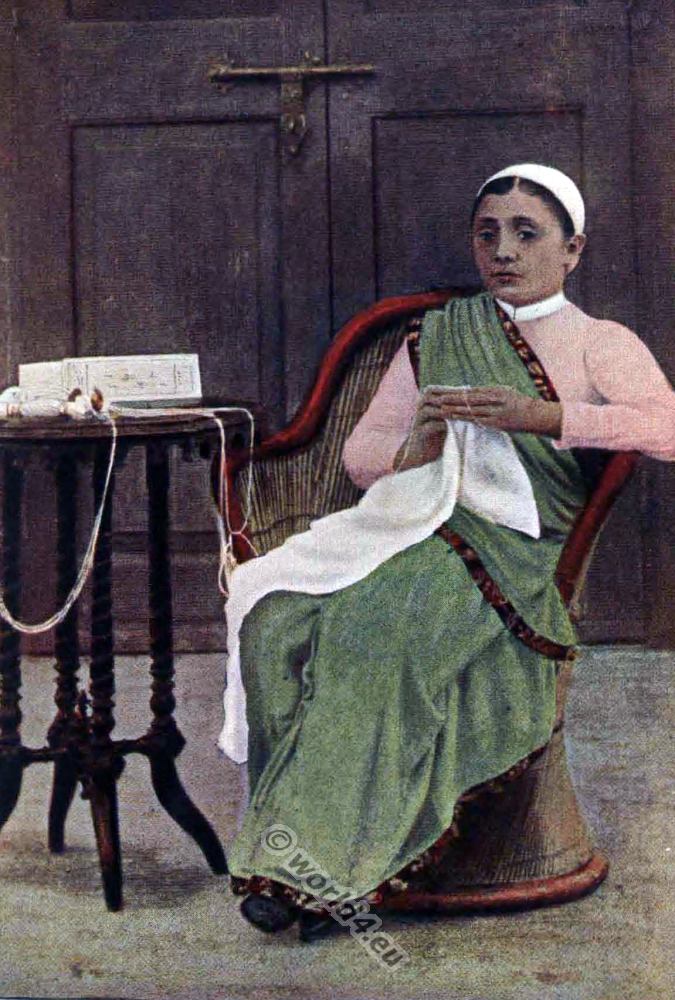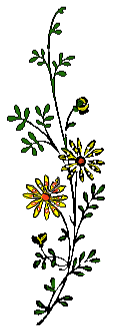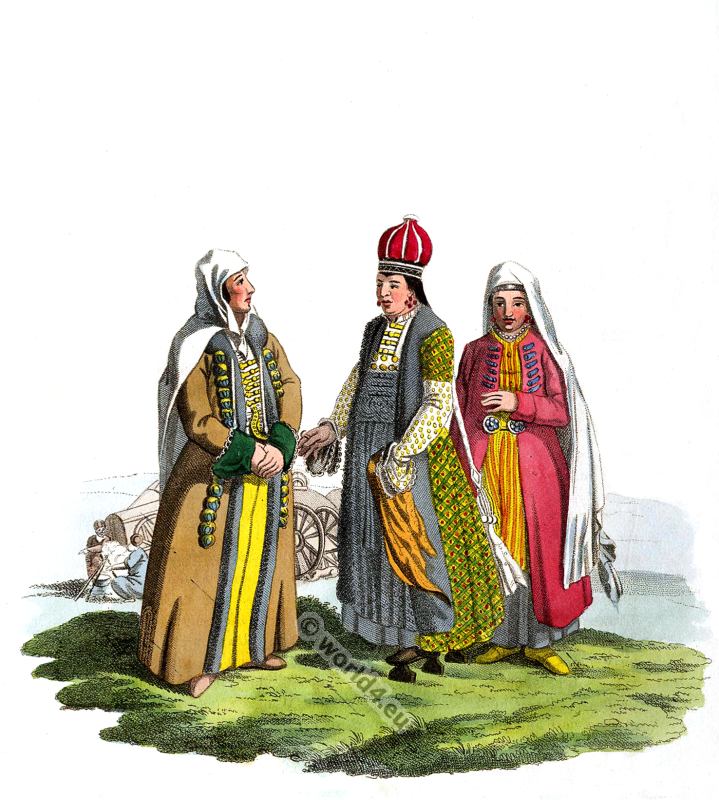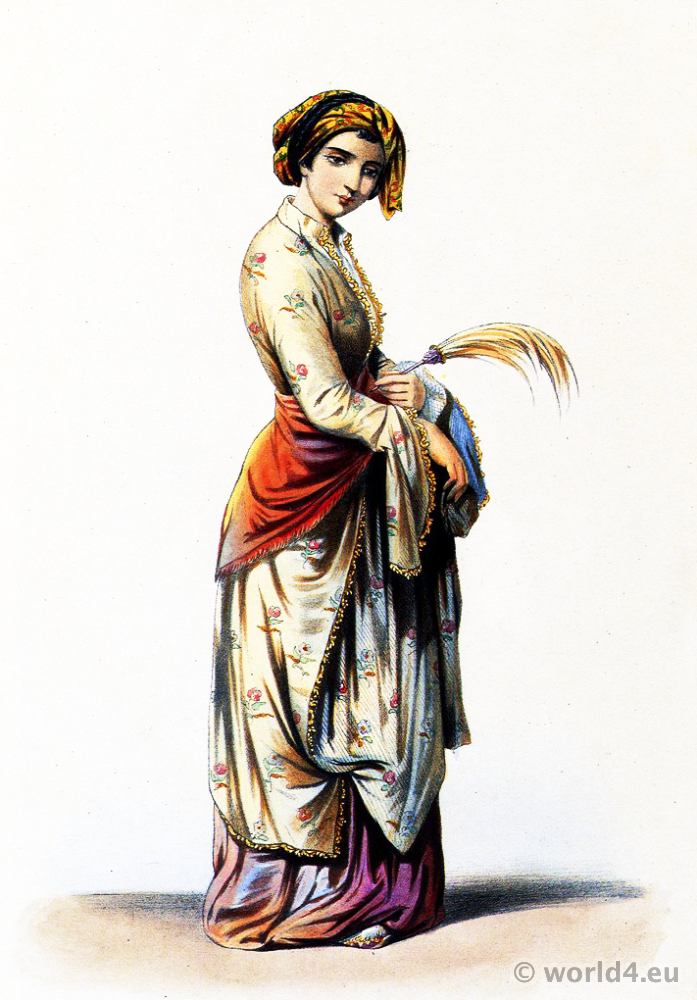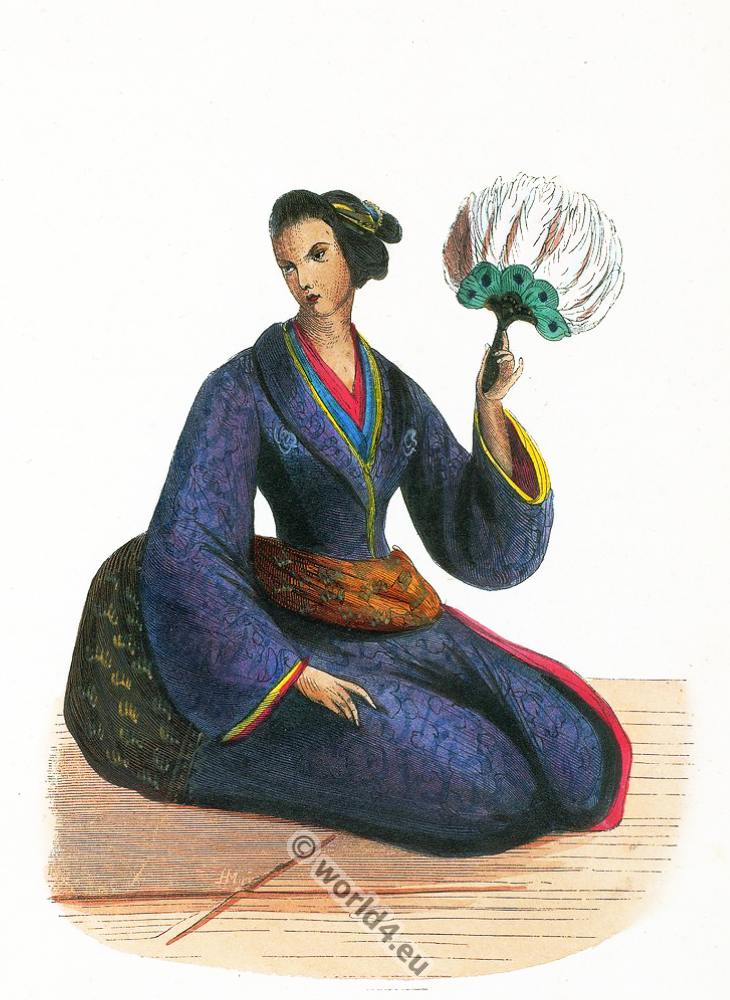A PARSEE LADY.
There are no such gaily attired women in the world as the Parsees. Their costumes, though similar in form to those of the Hindus, usually comprise less vivid colors-pale pink, sea green and lemon being favorite shades. The younger members of the community wear stockings and shoes of English shape.
A strange old custom in Parsee society is for the head of both males and females to be always covered, although there does not appear to be any other reason for this than long usage.
The men, when not wearing their outdoor head covering, put on a round cap, flat at the top, but as this is apparently in many instances only worn to comply with the letter rather than the spirit of the injunction, it is not infrequently worn so small as to forcibly remind us of the appearance of the humble companion of the organ grinder minus the chin strap.
The article worn by the women over their hair is known as a mathabana, and resembles a white pocket-handkerchief. Its use does not improve their personal appearance. In the walking costume, however, the sari, or outside garment, is passed round the shoulders and over the top of the head, so that the mathabana is unobserved, and the tout ensemble is then very graceful.
The most earnest desire and the highest ambition of a Parsee damsel is to secure an eligible husband, but she stands no chance whatever of becoming a bride unless her father pays, and pays handsomely, for the honor. A dowry is necessary, and the older the maiden, the larger the qualifying accompaniment has to become. It is by no means uncommon for a man earning a monthly salary of thirty rupees, to spend six months’ earnings upon the marriage of his daughter. This is not done from a wanton disregard of due economy, but because it is dastoor custom – and custom and caste are the two most far reaching words in the vocabulary of the continent of Hindustan, to whatever class of natives the words may be applied.
Parsees usually take three meals a day, the constituents of which very nearly resemble those of Europeans. It was formerly the custom for the men to eat first, and then allow the women to finish what was left, after the fashion still adopted by the Hindus. But of late this, and many other old habits, have fallen into disuse, and the meals are now taken together, the family being seated at a table, instead of squatting upon the floor.
Source: Typical pictures of Indian Natives. By F. M. Coleman, 1897.
Related
Discover more from World4 Costume Culture History
Subscribe to get the latest posts sent to your email.

